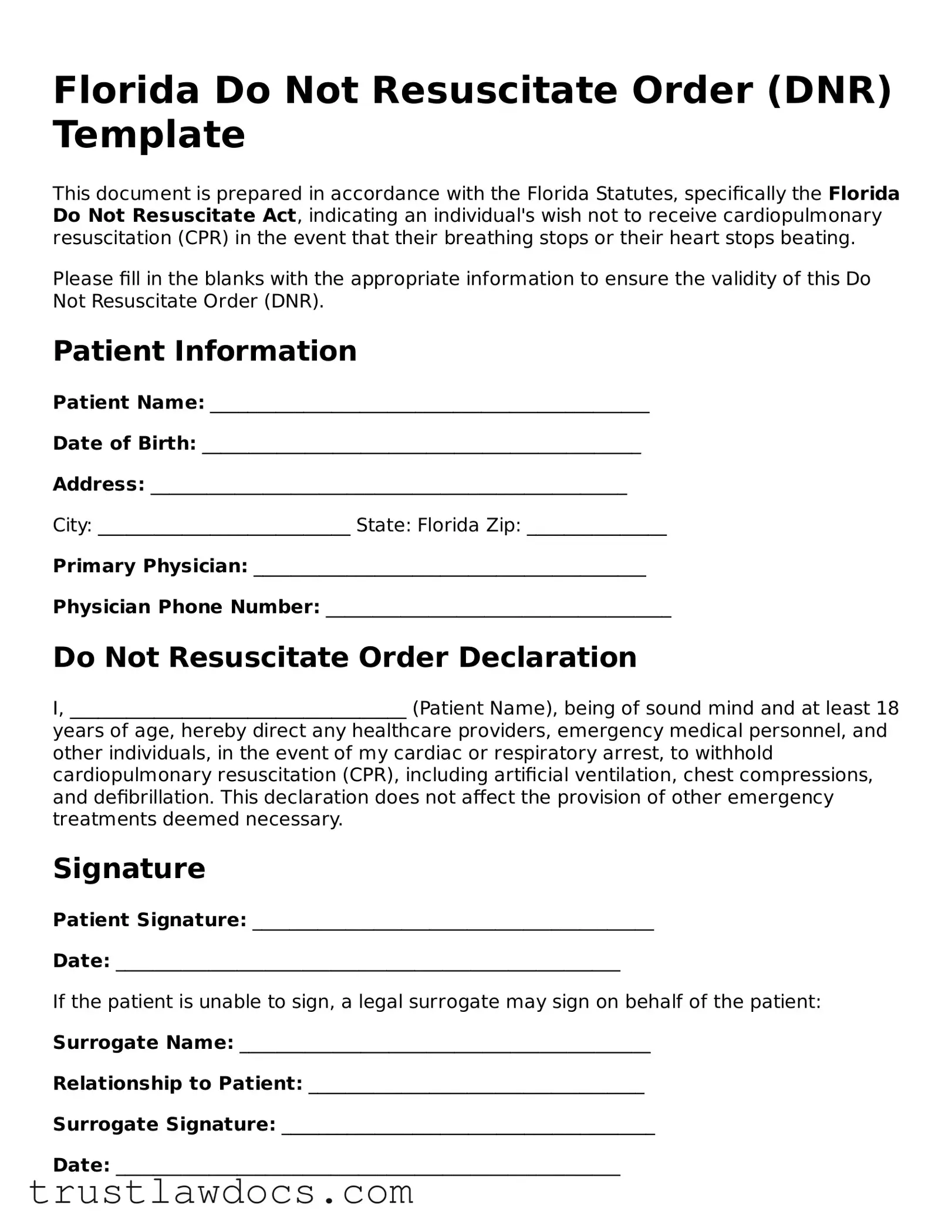Florida Do Not Resuscitate Order (DNR) Template
This document is prepared in accordance with the Florida Statutes, specifically the Florida Do Not Resuscitate Act, indicating an individual's wish not to receive cardiopulmonary resuscitation (CPR) in the event that their breathing stops or their heart stops beating.
Please fill in the blanks with the appropriate information to ensure the validity of this Do Not Resuscitate Order (DNR).
Patient Information
Patient Name: _______________________________________________
Date of Birth: _______________________________________________
Address: ___________________________________________________
City: ___________________________ State: Florida Zip: _______________
Primary Physician: __________________________________________
Physician Phone Number: _____________________________________
Do Not Resuscitate Order Declaration
I, ____________________________________ (Patient Name), being of sound mind and at least 18 years of age, hereby direct any healthcare providers, emergency medical personnel, and other individuals, in the event of my cardiac or respiratory arrest, to withhold cardiopulmonary resuscitation (CPR), including artificial ventilation, chest compressions, and defibrillation. This declaration does not affect the provision of other emergency treatments deemed necessary.
Signature
Patient Signature: ___________________________________________
Date: ______________________________________________________
If the patient is unable to sign, a legal surrogate may sign on behalf of the patient:
Surrogate Name: ____________________________________________
Relationship to Patient: ____________________________________
Surrogate Signature: ________________________________________
Date: ______________________________________________________
Physician Certification
The undersigned physician affirms that this Do Not Resuscitate Order is consistent with the prevailing health condition of the patient and the patient's known desires.
Physician Name: _____________________________________________
License Number: ____________________________________________
Physician Signature: ________________________________________
Date: ______________________________________________________
This Do Not Resuscitate Order is valid throughout the state of Florida and must be reviewed periodically, especially if the patient's medical condition changes significantly.
